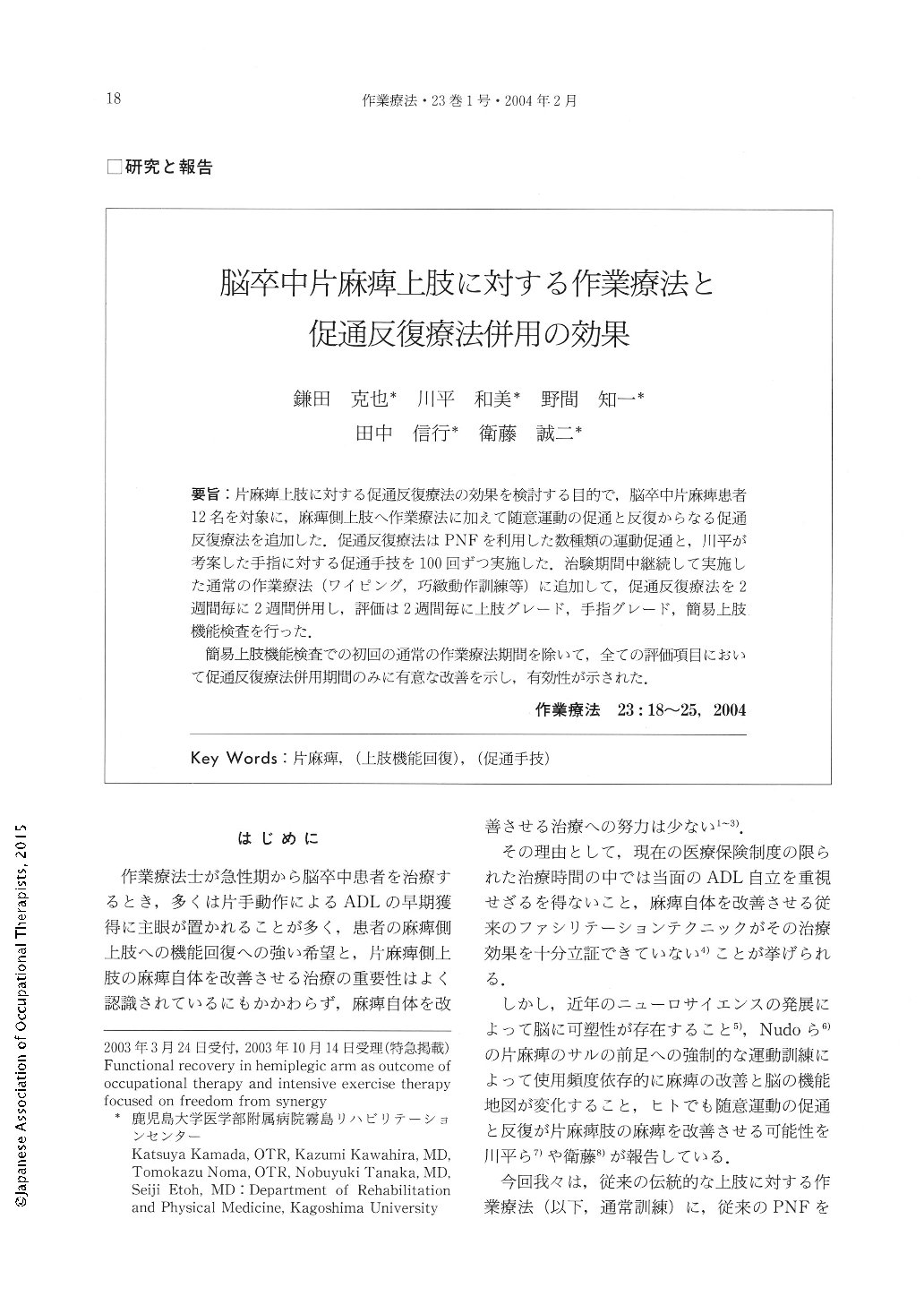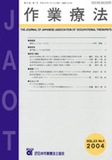Japanese
English
- 販売していません
- Abstract 文献概要
- 1ページ目 Look Inside
- 参考文献 Reference
- サイト内被引用 Cited by
要旨:片麻痺上肢に対する促通反復療法の効果を検討する目的で,脳卒中片麻痺患者12名を対象に,麻痺側上肢へ作業療法に加えて随意運動の促通と反復からなる促通反復療法を追加した.促通反復療法はPNFを利用した数種類の運動促通と,川平が考案した手指に対する促通手技を100回ずつ実施した.治験期間中継続して実施した通常の作業療法(ワイピング,巧緻動作訓練等)に追加して,促通反復療法を2週間毎に2週間併用し,評価は2週間毎に上肢グレード,手指グレード,簡易上肢機能検査を行った.
簡易上肢機能検査での初回の通常の作業療法期間を除いて,全ての評価項目において促通反復療法併用期間のみに有意な改善を示し,有効性が示された.
Object : To evaluate the effects of the intensive repetition of movements elicited by facilitation technique (IRF), to improve voluntary movements of hemiplegic upper limbs in patients with hemiplegia due to stroke.
Design : A multiple baseline design (A-B-A-B). Two 2-week sessions of IRF (more than 100 repetitions a day for each of the 8 kinds of movements) were intermittently added, in two 2-week intervals, to continuous conventional occupational therapy (wiping, pinching, etc.) for patients with hemiplegic upper limbs.
Setting : Inpatients rehabilitation facility.
Subject : Twelve patients with hemiplegia were studied (age : 60.1±11, years : time after onset : 17.9±15.2 weeks). Motor function of the affected upper limb : 12 grade 7.7 + 2.2 of hemiplegia, which reflects the degree of isolation from synergy.
Main outcome measures : Simple Test for Evaluating hand Function (STEF), influenced by both finger function and arm function, was conducted every 2 weeks—12 grade of upper limb and finger.
Result : Significant improvements in 12 Grade for upper limbs, 12 grade for fingers and STEF were shown after IRF sessions, except in the case of STEF after the first conventional occupational therapy sessions. Intensive repetition of movement's pattern elicited by a facilitation technique improved voluntary movements of hemiplegic upper limbs in patients with stroke.

Copyright © 2004, Japanese Association of Occupational Therapists. All rights reserved.


